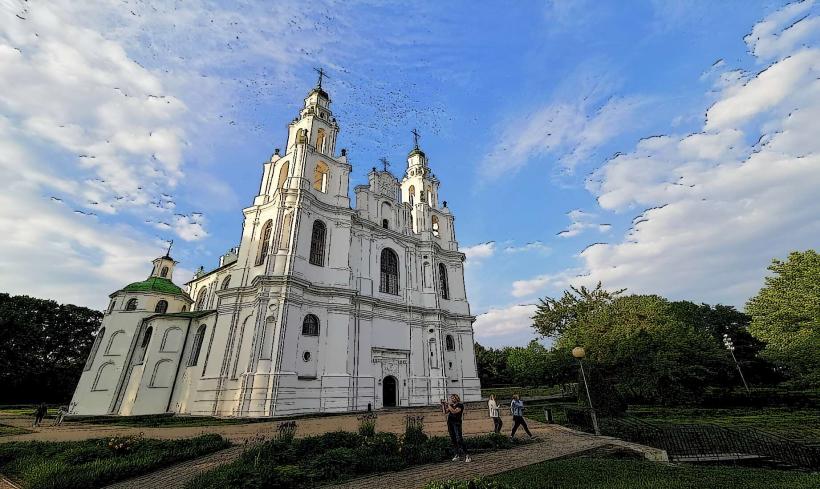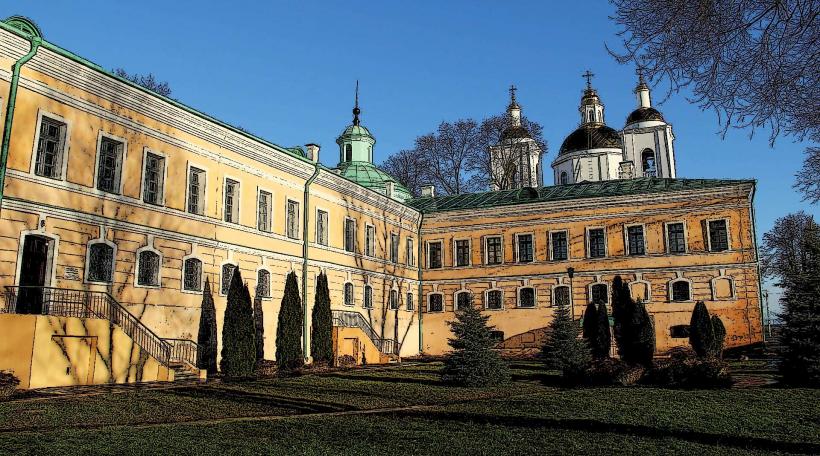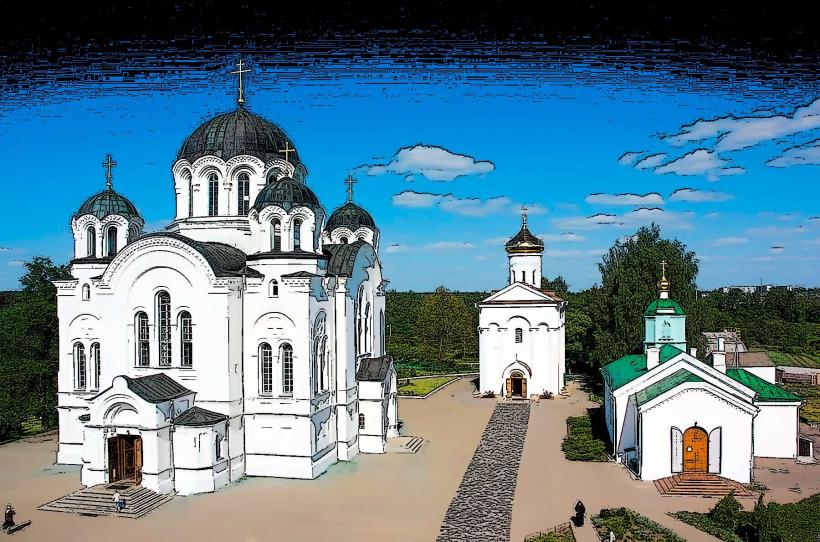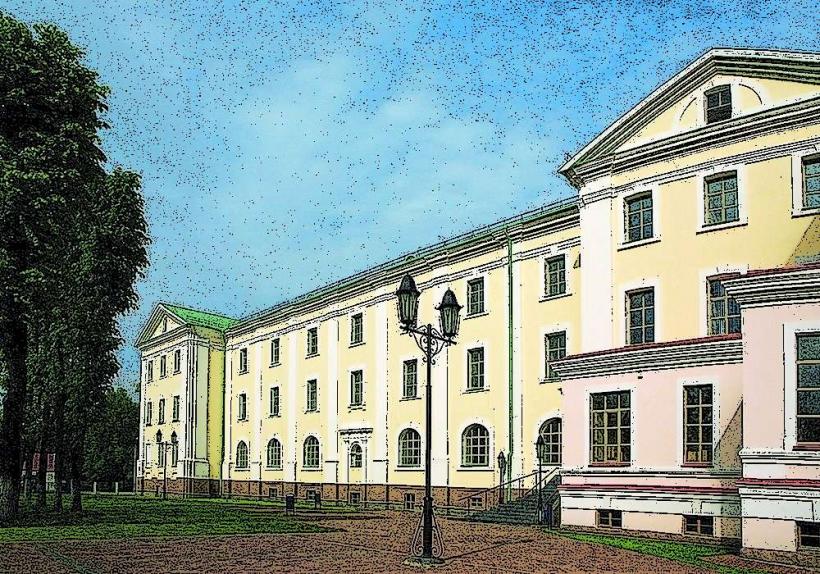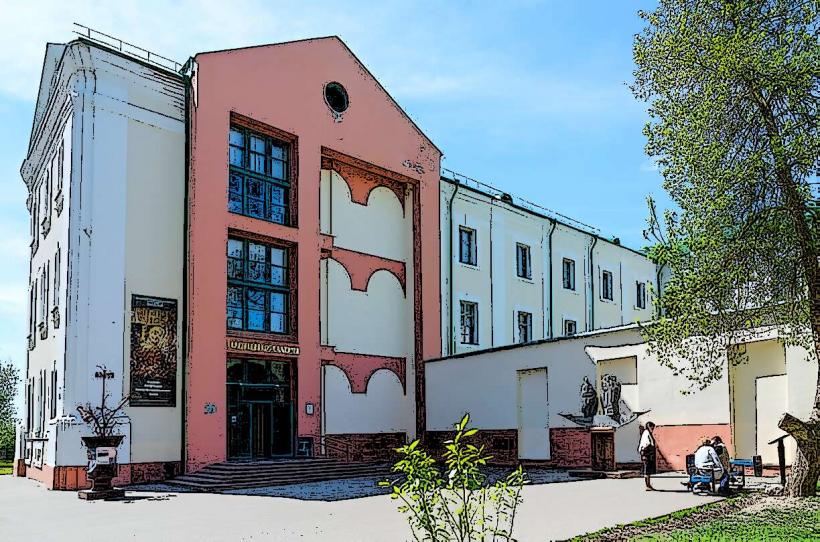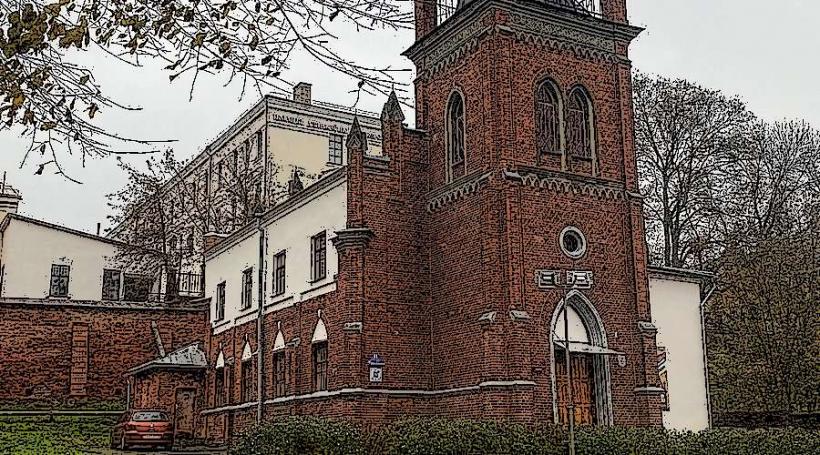Information
Landmark: Polotsk Town HallCity: Polotsk
Country: Belarus
Continent: Europe
The Polotsk Town Hall (also known as the Polotsk Ratusha) is one of the most important historical landmarks in Polotsk, Belarus, showcasing the city’s rich cultural, architectural, and political history. The town hall has been a symbol of Polotsk's development and status throughout the centuries and stands as a remarkable example of Baroque architecture, though its history spans several periods.
1. Historical Context and Early Construction:
The first town hall in Polotsk was built in the 16th century. It served as the administrative and political center for the city. Polotsk, once a prominent city in the Grand Duchy of Lithuania, was a bustling center of commerce, culture, and governance. The town hall reflected this significance, housing municipal authorities and providing a space for meetings and town functions.
However, like many buildings of that era, it was subject to fire, wars, and other damages over time. The original structure was not preserved, but its legacy influenced subsequent designs.
2. Baroque Reconstruction (18th Century):
The current Polotsk Town Hall dates back to the mid-18th century and was reconstructed in the Baroque style, a popular architectural form in Eastern Europe during that period. The rebuilding process was part of a larger effort to revitalize the city following various political and military upheavals, including the wars of the 17th century.
Design: The design of the town hall incorporates typical Baroque elements such as symmetry, decorative facades, curved lines, and rich ornamentation. The town hall has a spacious, symmetrical layout, with an impressive, towering clock tower that dominates the skyline of Polotsk. This tower served both as a symbol of civic authority and as a practical tool for timekeeping in the city.
Facade and Decorations: The exterior of the town hall features elaborate stucco decorations, including symbols of the city’s municipal power and trade prosperity. The structure’s central part is emphasized with windows, pilasters, and intricate detailing that represents the height of Baroque elegance.
3. Role in Polotsk’s Political and Cultural Life:
The Polotsk Town Hall played a central role in the administration of the city during the 18th and 19th centuries. As the political heart of the city, it housed the city’s government, which included officials who governed the town on behalf of the Grand Duchy of Lithuania and, later, the Russian Empire following the partitions of Poland.
- City Council Meetings: The building was the venue for meetings of the city council and other administrative functions. It also hosted important public events, festivals, and ceremonies, reinforcing its role as the heart of civic life in Polotsk.
- Symbol of Autonomy: During the time when Polotsk was part of the Grand Duchy of Lithuania, the town hall represented a symbol of the city’s relative autonomy within the larger state structure. The town hall and its functions were critical for the local self-government system, reflecting the importance of the city as a regional center.
4. Changes and Decline:
Like many buildings in Eastern Europe, the Polotsk Town Hall underwent several changes during the 19th and 20th centuries. The city, which had been a major center of trade and education, faced a decline in its political significance following the partitions of Poland in the late 18th century. As a result, Polotsk’s administrative functions shifted, and the importance of the town hall as a political center waned.
During the Soviet period, the building was repurposed, and its use evolved, like many historical structures in the region. The town hall no longer served as a place for municipal government; instead, it housed various government offices and became a space for public events. Throughout these periods, the building faced changes to its interior and exterior, but its Baroque design remained intact.
5. Modern-Day Role and Preservation:
Today, the Polotsk Town Hall is an important architectural monument and a key tourist attraction in the city. It has been preserved as a symbol of the city’s rich heritage, reflecting Polotsk’s medieval and early modern history.
Museum and Exhibition Space: In modern times, the Town Hall has been adapted for cultural use. It now serves as a museum, hosting exhibitions related to the history of Polotsk and its development. The building itself is an exhibit, offering visitors a glimpse into the architectural styles of the Baroque period.
Public Events: The town hall continues to host cultural events, public ceremonies, and educational programs, and it remains an important part of the city's historical identity. It also symbolizes the continuity of Polotsk’s civic and cultural life throughout centuries of political change.
6. Architectural Features:
- Clock Tower: The most striking feature of the Polotsk Town Hall is its clock tower, which is visible from various parts of the city. The tower adds a sense of grandeur to the building and serves as a civic landmark.
- Facade: The Baroque style is evident in the symmetrical windows, ornate columns, and decorative reliefs on the building’s facade. The intricate details of the stonework and stucco, combined with the elegant proportions of the building, make it a prime example of Baroque architecture.
- Interior: The interior of the town hall has undergone changes over time, particularly during the Soviet era when it was repurposed. However, parts of the interior have retained elements of the original Baroque design, with large, open spaces that once served as meeting halls and civic chambers.
7. Cultural and Historical Significance:
The Polotsk Town Hall is an essential part of the city’s historical narrative and remains a point of pride for the people of Polotsk and Belarus as a whole. Its importance is not just as a physical building but as a symbol of the city’s role in the broader political and cultural history of Belarus and Eastern Europe.
- Symbol of Civic Pride: The town hall has long been a symbol of Polotsk’s autonomy and prosperity. The building’s architectural beauty and historical significance make it a prominent feature in discussions of the city’s rich cultural heritage.
- Educational and Cultural Hub: As a museum, the Town Hall plays an important role in educating visitors about the city’s history, and it helps keep Polotsk’s cultural legacy alive for future generations. Its role in preserving local traditions and history ensures that the legacy of Polotsk as a key historical city is maintained.
Conclusion:
The Polotsk Town Hall is a key architectural and historical landmark in Belarus. Built in the Baroque style, it stands as a testament to the city’s past importance as a center of commerce, politics, and culture in the Grand Duchy of Lithuania and later in the Russian Empire. Its preservation and current use as a museum and cultural center ensure that Polotsk’s rich history continues to be celebrated and studied.

